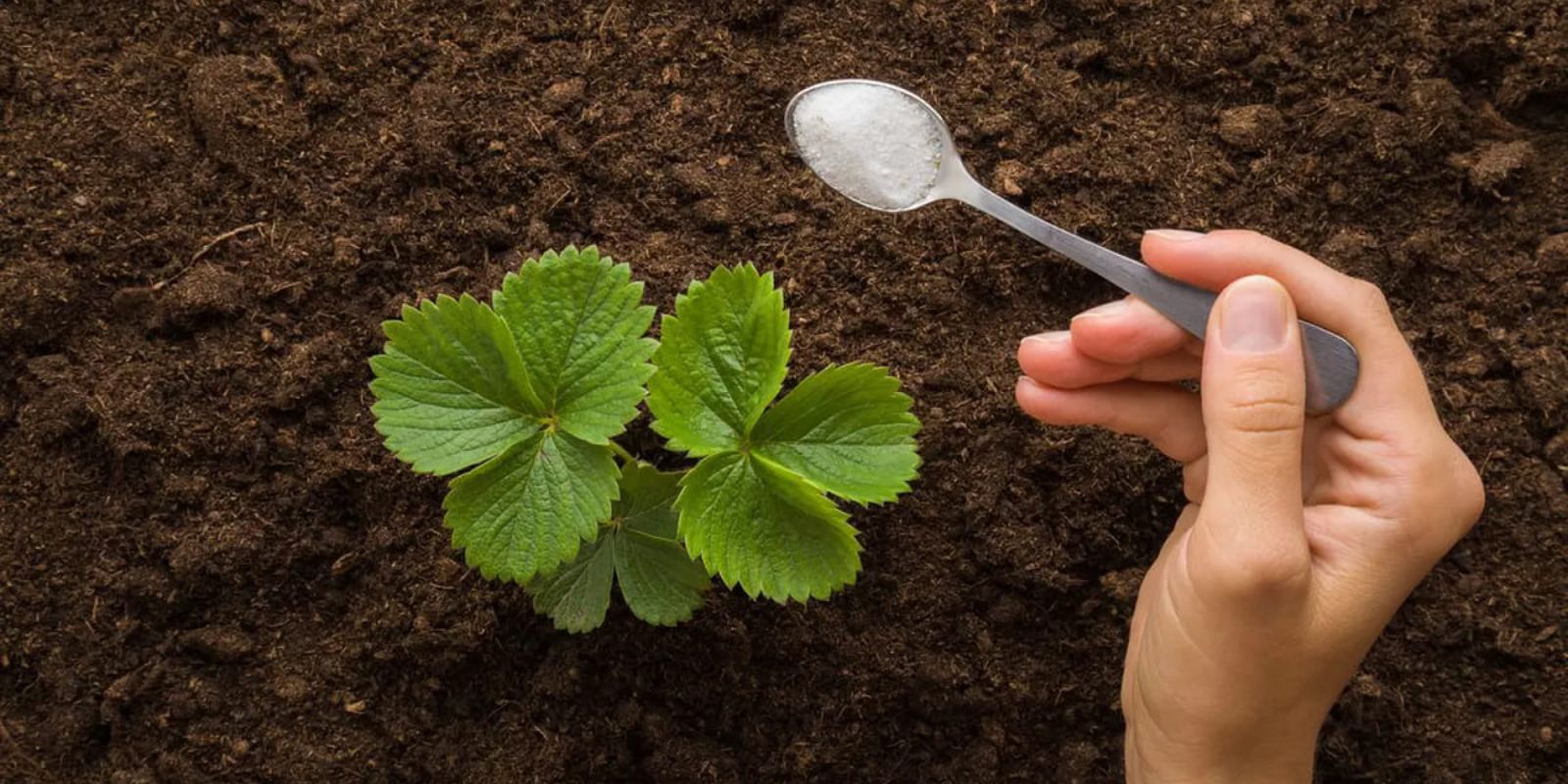Strawberries are a beloved fruit, cherished for their sweet, juicy flavor and versatility in desserts, smoothies, and fresh snacks. But what if you could grow your own giant strawberries at home without spending a fortune on expensive fertilizers? The secret lies in using a simple, homemade fertilizer—a tablespoon under each plant—that will help you achieve bigger, healthier, and more delicious strawberries.
In this guide, we’ll explore why this DIY fertilizer works, what ingredients you can use, and how to apply it correctly to maximize your strawberry harvest. Let’s dive into the details of this natural gardening trick that will transform your strawberry patch.
Why Do Strawberries Need Fertilizer?
Strawberries are heavy feeders, meaning they require a good amount of nutrients to grow strong roots, lush green leaves, and plump, sweet fruit. While commercial fertilizers can provide these nutrients, homemade fertilizers offer a natural, budget-friendly alternative that enriches the soil and promotes long-term plant health.
Key nutrients strawberries need include:
- Nitrogen (N): Helps with leaf and stem growth.
- Phosphorus (P): Supports root development and flowering.
- Potassium (K): Enhances fruit size, taste, and overall plant health.
- Calcium & Magnesium: Strengthen cell walls and prevent diseases like blossom-end rot.
By using a tablespoon of homemade fertilizer under each plant, you provide a slow-release nutrient source that boosts plant growth naturally.
Best Ingredients for Your DIY Strawberry Fertilizer
Several common kitchen and garden ingredients can be used to create an effective homemade fertilizer for strawberries. Here are some of the best options:
1. Eggshell Powder (Rich in Calcium)
Eggshells contain high levels of calcium, which strengthens plant cell walls and prevents diseases. To use:
- Collect and dry eggshells.
- Crush them into a fine powder.
- Sprinkle a tablespoon under each plant.
2. Coffee Grounds (Rich in Nitrogen)
Coffee grounds are an excellent nitrogen source, promoting lush foliage. To use:
- Dry used coffee grounds.
- Mix with compost or soil.
- Apply a tablespoon around each strawberry plant.
3. Banana Peel Powder (Rich in Potassium and Phosphorus)
Banana peels are packed with potassium and phosphorus, which support fruit development. To use:
- Dry banana peels in the sun.
- Grind them into powder.
- Apply a tablespoon under each plant.
4. Wood Ash (Rich in Potassium and Calcium)
Wood ash from untreated wood provides essential minerals for strawberries. To use:
- Collect fine wood ash.
- Sprinkle lightly around plants (avoid direct contact with roots).
5. Epsom Salt (Boosts Magnesium and Sulfur)
Magnesium helps with chlorophyll production, while sulfur improves root strength. To use:
- Mix one tablespoon of Epsom salt per gallon of water.
- Water your plants once a month.
6. Fish Emulsion (High in Nitrogen and Phosphorus)
Fish emulsion is an organic liquid fertilizer made from fish remains. To use:
- Dilute fish emulsion with water (according to package instructions).
- Apply as a soil drench near the base of the plant.
How to Apply the Fertilizer Correctly
To maximize the benefits of your homemade fertilizer, follow these simple application steps:
1. Choose the Right Time
- Apply fertilizer in early spring when plants start growing.
- Feed plants every 3-4 weeks during the growing season.
2. Measure the Right Amount
- Use one tablespoon of the chosen fertilizer per plant.
- Avoid over-fertilizing, as too much nitrogen can lead to excessive foliage growth with fewer fruits.
3. Apply the Fertilizer Properly
- Sprinkle the fertilizer around the base of each plant, keeping it 2-3 inches away from the crown.
- Gently mix it into the topsoil for better absorption.
4. Water Thoroughly
- After applying the fertilizer, water the plants well to help nutrients penetrate the soil.
5. Maintain a Healthy Strawberry Patch
- Mulch: Use straw or pine needles to retain moisture and prevent weeds.
- Prune Regularly: Remove dead leaves and runners to direct energy toward fruit production.
- Monitor for Pests: Look out for slugs, aphids, and fungal diseases.
Additional Tips for Growing Giant Strawberries
To get the biggest, juiciest strawberries possible, combine your fertilizer routine with these essential care practices:
1. Choose the Right Strawberry Variety
Some strawberry varieties naturally grow larger fruits. Consider planting:
- June-bearing Strawberries: Produce a single large crop in early summer.
- Ever-bearing Strawberries: Yield fruit twice a year (spring and fall).
- Day-neutral Strawberries: Produce fruit continuously throughout the growing season.
2. Provide Plenty of Sunlight
Strawberries need at least 6-8 hours of direct sunlight daily for optimal fruit development.
3. Ensure Proper Spacing
Overcrowding can lead to smaller berries. Space plants 12-18 inches apart to allow proper air circulation and room for growth.
4. Water Consistently
- Strawberries require 1-2 inches of water per week.
- Use drip irrigation or a soaker hose to prevent water from splashing on leaves (reducing disease risk).
5. Rotate Crops to Avoid Soil Diseases
Avoid planting strawberries in the same spot year after year. Rotate them with other crops like beans or lettuce to maintain soil health.
Common Mistakes to Avoid
🚫 Overusing Fertilizer: Too much nitrogen results in excessive leaves and fewer fruits. Stick to one tablespoon per plant.
🚫 Using Fresh Coffee Grounds: They can be too acidic. Always dry and compost them first.
🚫 Planting in Poor Soil: Ensure soil is rich in organic matter and drains well.
🚫 Neglecting Pest Control: Slugs and birds love strawberries. Use netting and organic pest deterrents.
Final Thoughts: Grow Bigger, Sweeter Strawberries Naturally!
With just a tablespoon of this homemade fertilizer under each plant, you can enjoy an abundant harvest of giant, juicy strawberries! By using simple, natural ingredients, you not only enhance plant growth but also promote sustainable, eco-friendly gardening.
🌿 Try this method today and watch your strawberries thrive! Have you used homemade fertilizers before? Share your experience in the comments! 🍓💚
#GiantStrawberries #OrganicGardening #GrowYourOwn #HomegrownGoodness #GardeningHacks #SustainableLiving #FruitLovers

